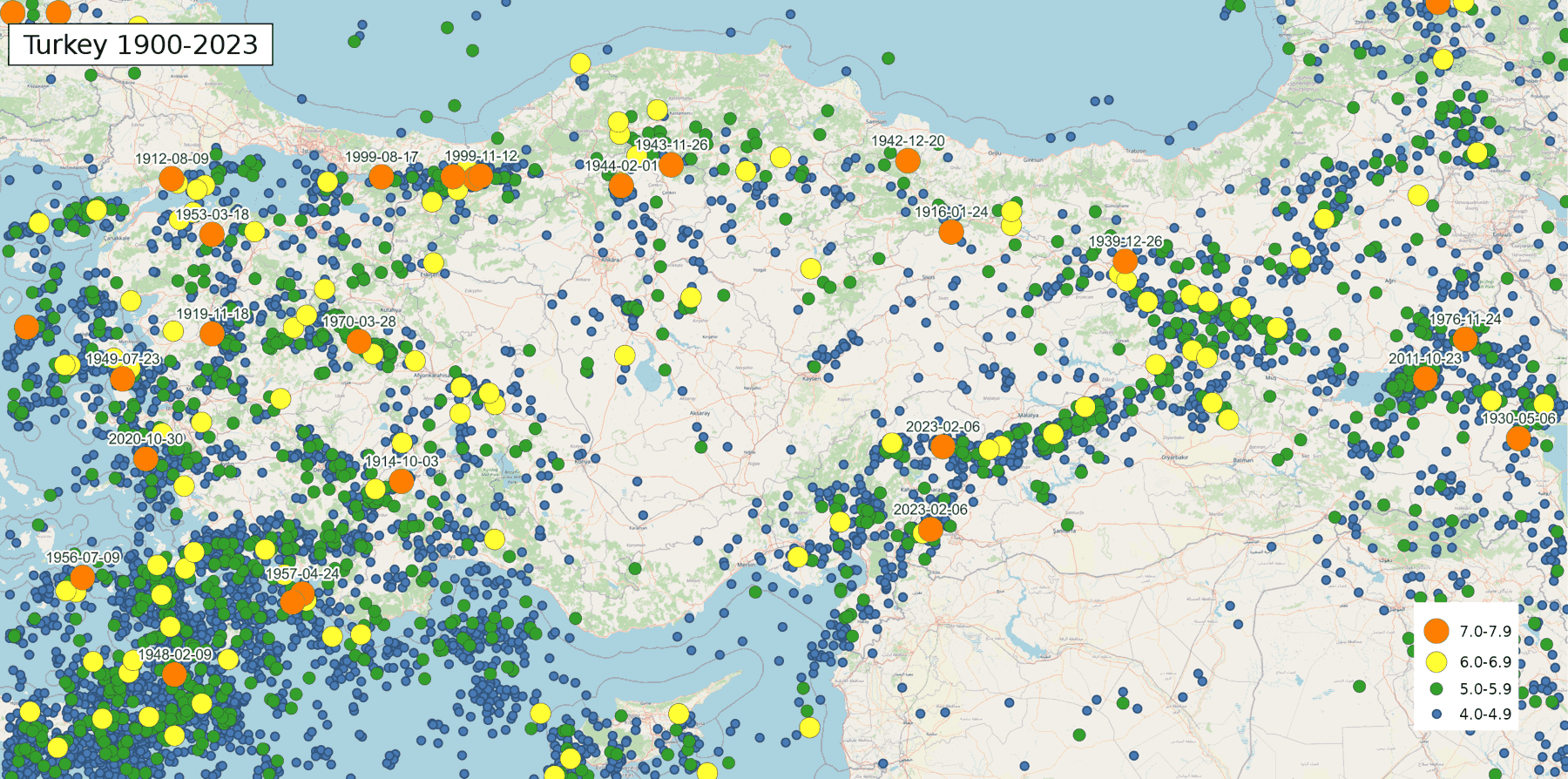Disaster Management: the importance of mapping for rescuers

26 February 2023
The recent events in Syria and Turkey showed the world how important it is to have efficient Emergency Management (EM) or Natural Disaster Management (NDM) system. Earthquakes, wildfires, and floods, only to name some, are difficult or sometimes impossible to predict, and having the instruments to react quickly is crucial to saving lives when those events occur. Especially when rescuers intervene, they often get lost in the destruction caused by natural and man-made disasters, so a mapping service is vital for them to do their job. The European Union developed an EM service called COPERNICUS that uses satellites to map the affected areas. But, sometimes, satellite imagery isn’t reliable enough, and new technologies can help to fill this gap.
Emergency & Natural Disaster Management
Emergency Management (EM) and Natural Disaster Management (NDM) aren't two common topics to discuss, but when in need, it's crucial to have the promptness and the capabilities to cope with emergency or disaster situations. Moreover, the recent events in Syria and Turkey showed the importance of the instruments in use once again. Earthquakes, wildfires, and floods, only to name some, are difficult or sometimes impossible to predict, and having the infrastructure to react quickly is crucial to saving lives when those events occur. But before discussing it further, what do EM and NDM exactly mean?
According to the US government's Federal Emergency Management Agency (FEMA), "EM is the managerial function charged with creating the framework within which communities reduce vulnerability to hazards and cope with disasters." Furthermore, they describe its mission as follows: "EM protects communities by coordinating and integrating all activities necessary to build, sustain, and improve the capability to mitigate against, prepare for, respond to, and recover from threatened or actual natural disasters, acts of terrorism, or other man-made disasters." (FEMA, 2023). So, EM is the set of precautions and actions to prevent emergencies and to react when something terrible happens. To the same extent, NDM is a branch of EM that entails only disasters caused by nature.
Emergency Management Systems: Copernicus
There are Emergency Management Systems (EMS) that help rescuers and institutions like Civil Protection to cope with emergencies and prevent them. These systems operate in many different ways: from Early Warning, which can inform when a calamity is approaching, to Mapping, to understand the context where the operations will take place. Especially this second element is vital for rescuers to be able to do their job as efficiently as possible and to understand the emergency/disaster's possible developments.
An example of an existent EMS is the EU's Copernicus EMS. It is part of the European Union's Earth Observation programme, named after the XVI century polish scientist, and has its constellation of satellites – called Sentinels – complemented by others owned by member states and privates (European Commission, 2015a). It offers a variety of services like Emergency Management, Atmosphere Monitoring, Marine Environment Monitoring, Land Monitoring, Climate Change, and services for Security applications (European Commission, 2015b). Controlled by the Emergency Response Coordination Centre (ERCC) 24/7, 365 days a year, the Copernicus EMS has been operating since the 1st of April 2012. It relies on these satellites' remote sensing as well as in-situ data. It has two main components: Early Warning, which delivers warnings and risk assessments of floods and forest fires, and Mapping, which provides geospatial information on the impact of natural and man-made disasters all over the world (before, during or after a crisis) (European Commission, 2017).
As said, the mapping system uses satellites images and has global coverage and can be helpful in an array of situations, such as floods, earthquakes, tsunamis, landslides, severe storms, fires, industrial accidents, volcanic eruptions, and humanitarian crises (European Commission, 2015a & 2017). It has two different modules: Rapid Mapping for emergencies requiring a quick response; and Risk & Recovery Mapping for cases that do not need an immediate response. So, Risk & Recovery maps are commissioned to prevent a disaster, assess the risk, prepare a plan for rescue and evacuation and help recovery, and there are three types of maps: reference map, pre-disaster situation map, and post-disaster situation map (European Commission, 2015b & 2017). The reference map shows the territory as a whole, highlighting exposed assets and population; the pre-disaster map help in the risk assessment and in planning for contingencies; the post-disaster situation map is used to assess recovery needs, map the disaster's long-term impact and monitor progress in the reconstruction.
On the other hand, rescuers ask for Rapid Mapping when a crisis is ongoing and need practical information about where they are operating. Three categories of maps are available: reference maps, delineation maps, and grading maps (European Commission, 2015). The first type uses pictures previous to the disaster to provide background knowledge, highlighting assets and any other information that can help in that specific crisis management task. The second map category employs satellite images taken right after the disaster to outline the space affected. Finally, the last one describes the impact or magnitude of damages in the area, comparing pictures from before and after the event. Each service requires from 9 hours to 6 days to be delivered, but the first available map is sent within 3 hours.
Therefore, the Copernicus programme has a great EMS that has received requests for activation, not only from Europe but from all over the world. The satellite-image-based system helps monitor difficult-to-access locations and how an area evolves during a period. However, it is necessary to remember that satellite images aren't always the most reliable for Mapping and can't be taken in every condition. For example, mapping accuracy depends on the nature of the phenomena observed. Optical satellites can only acquire images during the day and when there aren't clouds, haze or smoke, even though Copernicus has one radar satellite, but only one, that takes pictures in bad weather and night conditions (European Commission, 2015 & 2017).
Emergency Management Systems: TEMA
It would be useful to have other systems that can be even better than satellite ones, and new technologies can help us to create them. A Horizon Europe project, Trusted Extremely Precise Mapping and Prediction for Emergency Management (TEMA), aims to improve EM and NDM "by automating precise semantic 3D mapping and disaster evolution prediction to achieve NDM goals in near-real-time". The idea is to develop an integrated NDM platform that extracts from heterogeneous data modalities and sources in real-time to construct on the fly "a meaningful semantically annotated 3D disaster area map, prediction of disaster evolution and improved communication between service providers and end-users". An AI will analyse the data collected from "smart drone and in-situ sensors, remote sensing data, topographical data, meteorological data/predictions and geosocial media data (text, image and videos)" to constantly update the 3D map and to give the predictions on the disaster evolution. From this map, an Extended Reality interface will be originated to help NDM personnel visualise the current situation and dynamically evaluate response strategies.
Thus, using new technologies that can process a massive amount of data in a few seconds can produce precise 3D maps in real-time and could be a ground-breaking innovation in fields like EM and NDM, where time is a vital resource to save lives.

